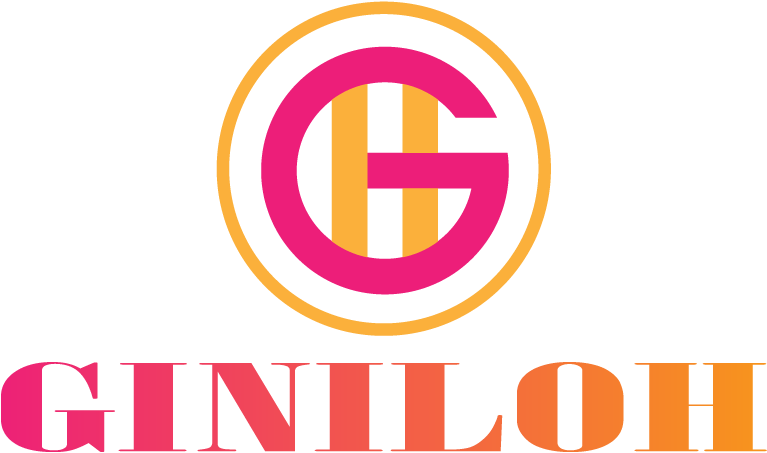In the fast-paced world of startups, design plays a critical role in distinguishing your brand and connecting with your target audience. Effective startup design tips emphasize the importance of visual aesthetics, usability, and the overall user experience, setting the foundation for a successful business. Design is not just about how things look; it’s about how they work and resonate with users. A well-thought-out design can communicate your startup’s values, enhance your product’s usability, and significantly impact your company’s growth and success. By prioritizing design from the outset, startups can create a strong, positive impression that attracts and retains customers, differentiating themselves in a competitive market.
Prioritizing Clarity and Simplicity
The Power of Minimalist Design
Minimalism, characterized by clean lines, uncluttered spaces, and a focus on functionality, can help startups convey their message and value proposition more clearly. This design philosophy supports the idea that less is more, enabling startups to highlight their products or services without overwhelming users with excessive details or flashy elements.
Strategies for Achieving Simplicity in Design
Achieving simplicity in design requires a thoughtful approach that goes beyond just removing visual clutter. It involves an understanding of the core values and goals of the startup and how best to communicate these through design for startups. Simplifying design elements not only makes your brand more approachable but also helps in creating a memorable user experience that users can easily navigate and understand.
Importance of Clarity in Communicating Brand Message
Design tips for startups often emphasize the need for a clear, concise message that speaks directly to the needs and aspirations of potential customers. This clarity should be evident in all aspects of your design, from the website copy to the visual imagery used across your marketing materials. A well-defined brand message, supported by a clean and straightforward design, ensures that your audience understands what your startup offers, how it benefits them, and why they should choose you over competitors.
Developing a Design Plan
Key Components of a Strong Visual Identity
Creating a strong visual identity is essential for any brand looking to establish itself and resonate with its audience. A compelling visual identity not only makes your brand memorable but also communicates your brand’s values and personality at a glance. By carefully crafting each component of your visual identity, you can create a powerful and cohesive brand image that stands out in a crowded market. Here are the key components that form the foundation of a strong visual identity:
- Logo: The cornerstone of your brand’s visual identity, a logo serves as the most recognizable symbol of your brand. It should be uniquely tailored to communicate your core values and mission effectively. A well-designed logo is simple, memorable, and versatile, able to adapt across various mediums and scales while maintaining its integrity.
- Color Scheme: A thoughtfully selected color scheme can evoke the right emotional response from your target audience and align seamlessly with your brand’s messaging. Colors have the power to influence perception and behavior, making it vital to choose hues that reflect your brand’s personality and values. Whether you opt for vibrant and energetic colors or more subdued and sophisticated tones, consistency in your color scheme across all branding materials is key to establishing a strong visual identity.
- Typography: The fonts and typefaces you select are not just a matter of style but also an expression of your brand’s personality. Typography choices should ensure legibility and readability across different platforms, from your website to printed materials. Consistent use of typography helps to reinforce your brand’s identity and contributes to a cohesive visual language.
- Imagery: The consistent use of images, illustrations, or graphics across your branding materials supports your brand story and values. Imagery should be carefully chosen to reflect the essence of your brand and appeal to your target audience. Whether through photography, custom illustrations, or a specific graphic style, imagery enhances the narrative of your brand and helps to create an emotional connection with your audience.
- Layout and Composition: The way design elements are arranged plays a significant role in creating a visually appealing and cohesive brand experience. Strategic layout and composition ensure that all visual components work together harmoniously, guiding the viewer’s attention and reinforcing the brand’s message. This includes the use of white space, alignment, and the balance between different elements. A well-considered layout enhances the overall aesthetic of your brand materials and contributes to a strong and recognizable visual identity.
From the logo and color scheme to typography, imagery, and layout, each element should be thoughtfully designed and consistently applied across all brand materials. By investing in a strong visual design for startups, you can ensure that your brand stands out, resonates with your target audience, and builds a lasting connection with them.
The Impact of Visual Identity on Target Audience Engagement
It’s the visual identity that captures their attention, elicits emotional responses, and encourages deeper exploration of what your startup offers. Startup branding through compelling visual design can significantly increase the likelihood of your audience taking the desired action, whether it’s subscribing to a newsletter, making a purchase, or recommending your brand to others.
Strategies for Maintaining Brand Consistency
Ensuring brand consistency is crucial for startups aiming to establish a strong presence in the market. Consistent branding across all platforms and touchpoints can significantly enhance customer trust. Here are effective strategies to achieve this goal:
- Use Consistent Messaging Across All Channels: Your brand’s core message and tone of voice must be uniform across all communication channels. Whether it’s through your website, social media, email campaigns, or advertising, a consistent message reinforces your brand identity and values with every interaction. This strategy helps in building a strong, cohesive brand experience that resonates with your audience, making your startup more memorable and trustworthy in the eyes of consumers.
- Implement Quality Control Processes: To ensure that all brand materials meet your standards, it’s crucial to establish quality control processes for reviewing and approving content before it goes public. This step is key to catching any inconsistencies and maintaining a high standard of design and communication. Implementing such processes helps safeguard the integrity of your brand, ensuring that every piece of content accurately reflects your brand’s values and visual identity.
- Educate Your Team and Partners: Maintaining brand consistency requires the collective effort of everyone involved in creating content for your brand, including employees and external partners. Ensuring that they fully understand your brand guidelines and the importance of consistency is vital. Regular training sessions and updates can help keep everyone on the same page, fostering a culture of brand coherence and attention to detail.
- Regularly Review and Update Brand Materials: As your startup grows and evolves, your brand materials should too. Regularly reviewing and updating content ensures that everything remains relevant and aligned with your current brand guidelines. This not only helps in maintaining consistency but also offers an opportunity to refresh elements that may have become outdated or no longer reflect your brand’s direction. Keeping your brand materials current is essential for staying relevant and engaging to your audience.
By implementing these strategies, startups can ensure that their brand remains coherent and recognizable across all platforms and materials. This consistency lays the foundation for building trust and loyalty with your audience, driving long-term success and recognition in a competitive landscape.
Aligning Design with Business Goals and Customer Needs
Integrating Design Thinking into Business Strategy
This mindset emphasizes empathy with users, a commitment to solving real problems, and a focus on rapid prototyping and iteration. By adopting design thinking, startups can ensure that their products and services are not only beautifully designed but also deeply aligned with the needs and challenges of their target audience. This alignment between design and business objectives encourages innovation and facilitates the creation of solutions that are both viable and desirable.
Identifying and Addressing Customer Pain Points Through Design
This requires a deep understanding of the customer journey, including the challenges users face and the obstacles that may prevent them from achieving their goals. By pinpointing these pain points, startups can use design strategically to alleviate or eliminate them, therefore improving customer satisfaction and loyalty.
Design Decisions and Business Objectives
Design strategy for businesses should be developed with a clear understanding of the company’s goals, whether they involve increasing conversions, boosting engagement, or building brand awareness. By aligning design decisions with these objectives, startups can ensure that every element of their visual and user experience is working towards the same end goal, maximizing the effectiveness of their strategic efforts.
As startups continue to evolve, the role of design in driving growth and fostering innovation becomes increasingly critical. The future of design in the startup ecosystem is likely to see a greater emphasis on adaptability, user-centered approaches, and the integration of new technologies. Design strategies for startups will need to be more dynamic, anticipating shifts in consumer behavior and market demands. Embracing emerging trends such as AI-driven design, augmented reality experiences, and sustainable design practices will offer startups new avenues for engagement and differentiation. As we look forward, the startups that will thrive are those that view design not just as a tool for aesthetic enhancement but as a strategic asset integral to their development and success.

